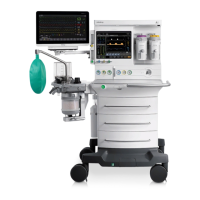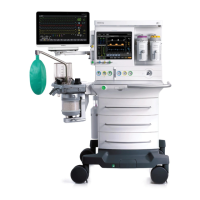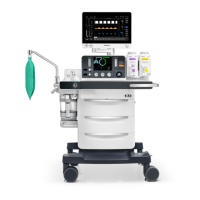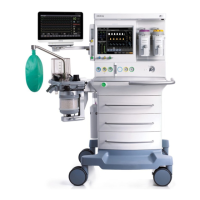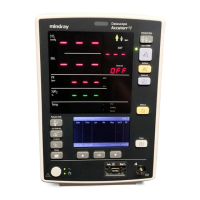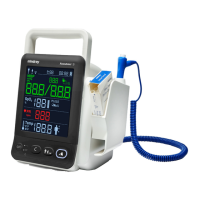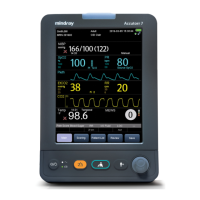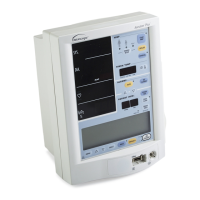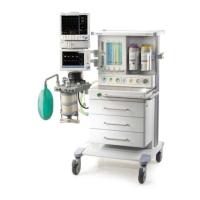Operator’s Manual of Anesthesia System 9 - 7
Maintenance Handling of Gathered Water
9.5 Handling of Gathered Water
9.5.1 Avoid Water Gathering
Water comes from the condensation of exhaled gas and a chemical reaction between CO
2
and the
soda lime in the CO
2
absorbent canister. At lower fresh gas flows more water builds up because of
the following:
•More CO
2
stays in the CO
2
absorbent canister to react and produce water.
• More moist, exhaled gas stays in the breathing system and CO
2
absorbent canister to
produce condensed water.
When the anesthesia system is in use, water build-up inside the flow sensor, watertrap, gas module
watertrap, and patient tube could result in abnormal flow waveform, unstable tidal volume or
inaccurate measured value of gas. If there is water build-up, clear it immediately before use.
To prevent water build-up:
• Increase the fresh gas flow as appropriate. More water may be gathered when the fresh gas
flow is lower than the OPTIMIZER®, and less water is gathered when the fresh gas flow is
higher than the OPTIMIZER®.
• Enable breathing circuit heating can help reduce the gathered water in the circuit, but the
water gathered in the breathing tube may increase on the contrary.
• Use a filter between the flow sensor and the patient to limit water condensation in the flow
sensor.
9.5.2 Clear Gathered Water
Water build-up inside the flow sensor, watertrap, gas module watertrap, and patient tube results in
abnormal flow waveform, unstable tidal volume or inaccurate measured value of gas. If there is water
built up inside these parts, clear the water, then reinstall the parts for use.
WARNING: Check water build-up inside the flow sensor before every system use.
Accumulated water in the flow sensor causes erroneous readings.
WARNING: Ensure that all breathing system parts are completely dried after the
breathing system is cleaned and disinfected.
WARNING: Water may gather in the patient's breathing tube if the Auto Ventilation
mode is used for a long time (such as longer than four hours). Clear the
gathered water in time to avoid impact on the ventilation or ingress of
water into the patient circuit.
9.6 Electrical Safety Inspection
NOTE: Perform electrical safety inspection after servicing or maintenance.
Before the electrical safety inspection, make sure all the covers, panels,
and screws are correctly installed.
NOTE: The electrical safety inspection should be performed once a year.
39 Failure to save table 1. Perform the calibration again.
2. Replace the CPU board.
3B ACGO switched on Turn off the ACGO switch.
ERROR CODE DESCRIPTION RECOMMENDED COUNTERMEASURES
Table 9-2 O
2
sensor calibration error codes

